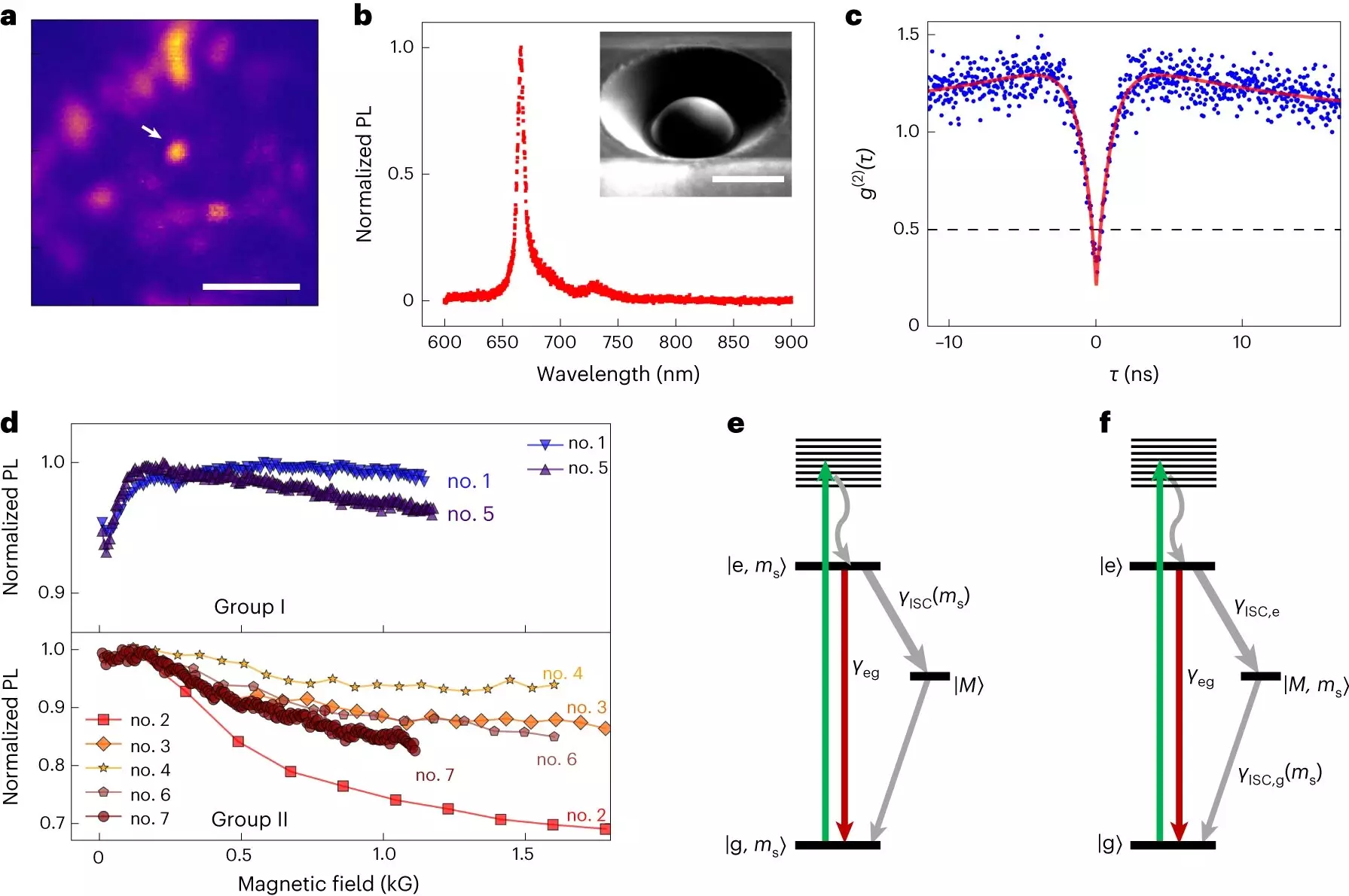The world of quantum computing is continually expanding, with researchers constantly searching for new materials and techniques to harness the power of quantum technology. In a recent groundbreaking study, led by Professor Greg Fuchs and doctoral student Jialun Luo, researchers from Cornell Engineering uncovered unexpected quantum potential in the widely used semiconductor gallium nitride. This discovery has opened new doors for the development of quantum applications and has the potential to revolutionize various fields, from sensing magnetic fields to creating robust quantum networks.
Defects: A Window into Quantum Sensing
In the realm of semiconducting materials, defects play a crucial role in enabling quantum sensing capabilities. These defects, which can be visualized as jostled arrangements of atoms, may harbor electrons with an intriguing property called spin. This spin degree of freedom can store and process information, making it an essential component for quantum applications. Diamonds are well-known for their defects, often referred to as color centers, which give the gems their vibrant hues. However, there are many undiscovered color centers in various materials, even in commonly used ones like gallium nitride.
Unraveling the Quantum Secrets of Gallium Nitride
In collaboration with Professor Farhan Rana and doctoral student Yifei Geng, Fuchs and Luo embarked on a journey to explore the quantum potential of gallium nitride. Unlike diamonds, gallium nitride is a mature semiconductor, extensively utilized in high-frequency electronics. Nevertheless, its potential for quantum defects remained largely unexplored. The team employed confocal microscopy to identify defects in the material and conducted a series of experiments, including measuring fluorescence rate changes and resonant transmissions of the defects’ spin states, all at room temperature.
The Surprising Discoveries
The initial data revealed intriguing spin structures, but the researchers encountered challenges in driving the spin resonance. Through meticulous analysis and perseverance, they determined that understanding the defect symmetry axes and applying a magnetic field along the correct direction were crucial for probing the resonances effectively. Consequently, they uncovered two distinct types of defects in the material, each exhibiting fascinating spin spectra.
One of these defects was coupled to a metastable excited state, while the other was coupled to the ground state. Of particular importance was the latter, as the researchers observed fluorescence changes of up to 30% when manipulating its spin transition. This significant change in contrast at room temperature is a remarkable feat for a quantum spin. Traditionally, fluorescence and spin are weakly connected, resulting in minuscule changes. However, the ability to achieve a substantial and rapid change opens up exciting possibilities for technological applications.
Building upon their remarkable findings, the researchers ventured into a quantum control experiment. They discovered they could manipulate the ground-state spin and, importantly, observed quantum coherence – a property that allows quantum bits, known as qubits, to retain their encoded information. This observation is particularly promising, laying the foundation for future advancements in quantum computing and information processing using gallium nitride.
While the findings hold tremendous potential, the researchers acknowledge that there is still much work to be done. Many questions remain unanswered, inviting further exploration and fundamental research. However, the ability to unlock the quantum secrets of gallium nitride opens up a world of possibilities in fields such as quantum sensing, information processing, and high-frequency electronics. The discovery of these two distinct defects paves the way for exciting developments in the coming years and brings us closer to harnessing the true power of quantum technology.
Fuchs, Luo, and their team have made groundbreaking discoveries in the quantum potential of gallium nitride. By delving into the world of defects and spin degrees of freedom, they have unlocked new avenues for quantum applications. With further research and refinement, gallium nitride may become a key material in the quest for quantum computing and related technologies, marking a significant milestone in the field of quantum physics.


Leave a Reply